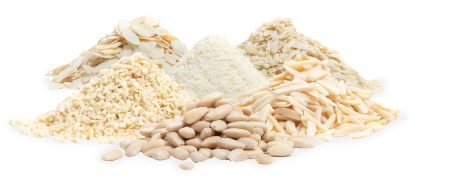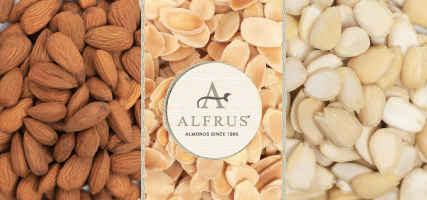
Our almond production customized to the millimeter
For us at Alfrus, the perfect almond is a matter of precision.
A precision we guarantee through a customized processing service tailored to the millimeter to meet the specific needs of each client and the characteristics of the product destined for the market.
In our facilities, standardized solutions simply do not exist. Our customized approach combines advanced technology, artisanal expertise, and deep knowledge of every sector, with a keen attention to detail.
Relying on customized almond processing allows food industries to create exclusive, highly successful products, ensuring superior quality standards, meeting market demands, and facilitating production processes. Alfrus collaborates with a wide range of food industries, providing tailored solutions for:
– Confectionery and ice cream products: where the consistency and flavor of almonds play a key role;
– Bakery products: which require uniform raw materials to ensure excellent final results;
– Snacks and bars: where the cut, crunchiness, and color influence the product’s success.
Our versatile and flexible almond processing and transformation system is based on high-tech plants, laboratory analyses, and scientific collaborations with prestigious research centers, supporting food industries in the study and testing of new products to be launched on the market.
This system enables us to achieve the perfect almond, following the specifications defined with the client and customizing every single detail, including:
– Seed size
– Granulometries achieved through cutting
– Color gradations
– Flavor and texture
To reach such a high level of precision, our company integrates advanced machinery, such as optical sorters and mechanical calibrators, with the expertise of its operators, ensuring impeccable processing. Every stage, from raw material selection to the finished product, completes the production line in a fully customized way.
This synergy allows us to go beyond simply processing raw materials, analyzing and adjusting them to meet industry demands, transforming each batch of almonds into a superior-quality, personalized product.
Thanks to this strategic approach, Alfrus has stood out for years in the food ingredient sector as a benchmark for quality, innovation, and customization.
Because our goal is to offer almonds that not only meet but exceed our customers’ expectations.
28th September 2024






